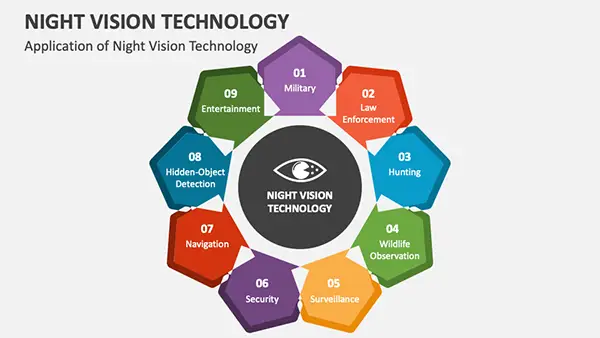- Origins of Night Vision Clip-On Systems
- Graphene-Based Sensors
- Digital Innovation and Image Quality
- Integration of Thermal Imaging
- White Phosphor Technology
- Reduced Size and Weight
- Extended Battery Life and Power Efficiency
- Wireless Connectivity and Smart Features
- Enhanced Environmental Resistance
- Improved Range and Performance
- Cost Reduction and Accessibility
- Integration with Augmented Reality
- To sum up
You wouldn’t believe it, but night vision technology has been around for decades, since the 1930s. It has been used by military officials to lead secret missions at the nighttimes.
However, this technology is set to see a new change with the introduction of many smart devices like clip-on systems. We have witnessed many changes since its introduction, but the combination of night vision and thermal imaging has played a big part in contributing to its performance.
If you are also curious about these advanced night vision clip-on systems and the tech advances that are going to unfold, go through this write-up. It will help you understand about these systems and their applications in the future.
Origins of Night Vision Clip-On Systems
First, let’s get to know where this technology came from. Night vision clip-on systems emerged as a response to the need for versatility in low-light conditions.
It was initially designed for military applications, where these systems allowed existing optics, such as scopes or binoculars, to be transformed into night vision devices.

Over the past 90 years, these devices have gone through multiple changes and several scientific and tech advancements. Their inception marked a huge turnover in the approach to nocturnal operations.
Graphene-Based Sensors
Graphene was discovered in 2004 and gained fame through the name ‘miracle material’. It has immense strength and comparably low weight. Graphene is widely known for its efficiency in conducting heat and electricity.
It operates at room temperature and eliminates the need for unnecessary bulky equipment.
Graphene gave a chance for a breakthrough in thermal imaging innovation. Its ability to sense the whole infrared spectrum made it possible to find a way to create an electric signal from it. Scientists believe that this material could open new doors for opportunities in night vision technology.
Note:
Graphene is a material that is extracted from graphite. It is made up of pure carbon.
Digital Innovation and Image Quality
Many recent advancements in night vision clip-on systems have witnessed a shift from traditional analog image intensifiers to digital technology.
The advances in image intensifier tubes allow you to improve your vision capabilities in low-light situations.
Digital systems offer improved image quality, enhanced clarity, and the ability to incorporate features like image recording and wireless connectivity. The result is a more immersive and effective night vision experience for users.
Integration of Thermal Imaging
One of the significant breakthroughs in modern night vision clip-on systems is the integration of thermal imaging technology. This fusion allows users to switch between traditional night vision and thermal modes seamlessly.

Thermal imaging brings a new dimension to these systems, allowing the detection of heat signatures in complete darkness or challenging environmental conditions.
White Phosphor Technology
It is believed that white phosphor technology can help enhance contrast and perception in night vision devices. Many of the latest night devices have used this technology for a new level of clarity and detail. It is said to prove beneficial for the military and law enforcement agencies.
Let’s see how this works: it captures light from a near-infrared illuminator and converts it into visible light. It enables the users to see the things that are not possible with the common night vision devices.
This technology helps to see more contrast and visibility in the dark. Moreover, it enhances the ability to see more detail in the dark. Hence, it is becoming popular in the military for its amazing qualities.
Reduced Size and Weight
In the past, the size and weight of these devices became an issue in the battlefield or missions. However, the advancements in miniaturization and material sciences have led to a considerable reduction in the size and weight of night vision clip-on systems.
These compact and lightweight devices offer improved maneuverability, making them more practical for a diverse range of applications, from military operations to outdoor recreational activities.
Extended Battery Life and Power Efficiency
The quest for longer operational duration has driven advancements in battery technology for night vision clip-on systems. More efficient power management systems and the use of rechargeable batteries have significantly extended the devices’ battery life.
This enhancement is particularly necessary for prolonged missions or extended outdoor activities.
Wireless Connectivity and Smart Features
The integration of wireless connectivity features has opened new possibilities for night vision clip-on systems.

Users can now transmit real-time imagery to other devices, enabling improved collaboration in tactical scenarios or facilitating sharing in recreational settings.
Smart features, such as GPS integration and augmented reality overlays, further enhance the user experience.
Enhanced Environmental Resistance
You would be amazed to know that technology has enabled modern night vision clip-on systems to be designed to withstand harsh environmental conditions.
Weather-sealed and ruggedized constructions in the devices make sure that these devices can operate effectively in rain, snow, or extreme temperatures, expanding their utility in various operational contexts.
It can become the best weapon for the soldiers in harsh weather and helps them to navigate their way easily.
Improved Range and Performance
Ongoing research and development efforts have led to significant improvements in the range and performance of night vision clip-on systems.
Enhanced optics, increased sensitivity, and better image processing algorithms contribute to extended detection ranges and heightened overall performance in low-light environments.
Cost Reduction and Accessibility
As technology advances, manufacturing processes improve, leading to a reduction in the overall cost of night vision clip-on systems. This cost-effectiveness increases accessibility.
It allows a broader range of users, including outdoor enthusiasts and law enforcement agencies, to benefit from these advanced night vision capabilities.
Integration with Augmented Reality
The integration of night vision clip-on systems with augmented reality (AR) technology is a futuristic development.

The above image shows the market size of the night vision device market in the future.
This innovation allows users to overlay digital information onto their night vision imagery, providing additional data and enhancing situational awareness in real time.
To sum up
The continuous evolution of night vision clip-on systems mirrors the relentless march of technology into unexplored territories.
As these systems become more sophisticated, accessible, and seamlessly integrated into various applications, they promise to redefine our understanding of the night and open new frontiers of exploration in the dark.







